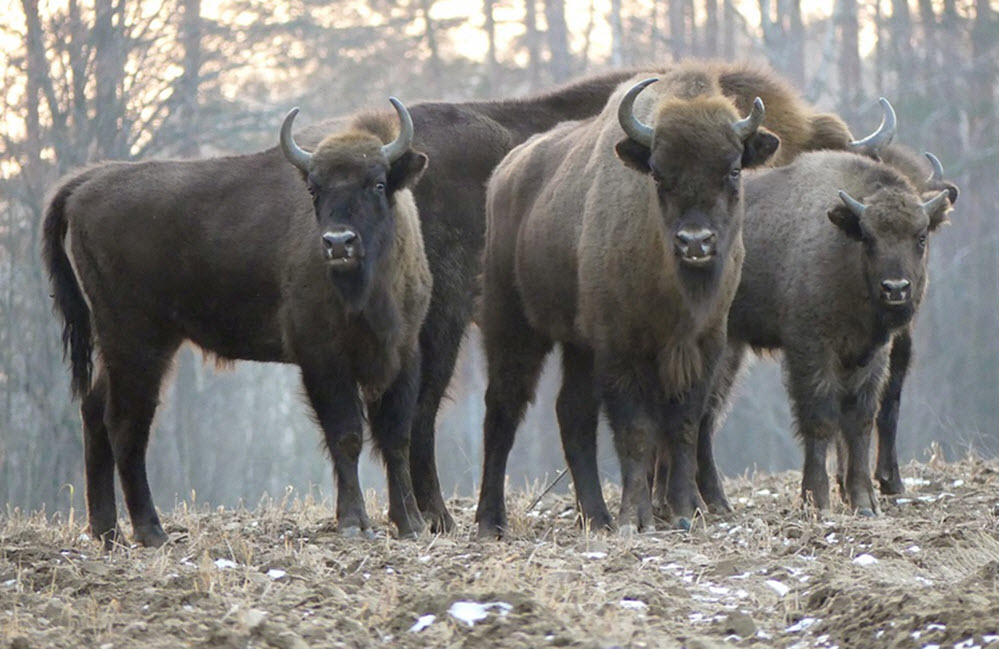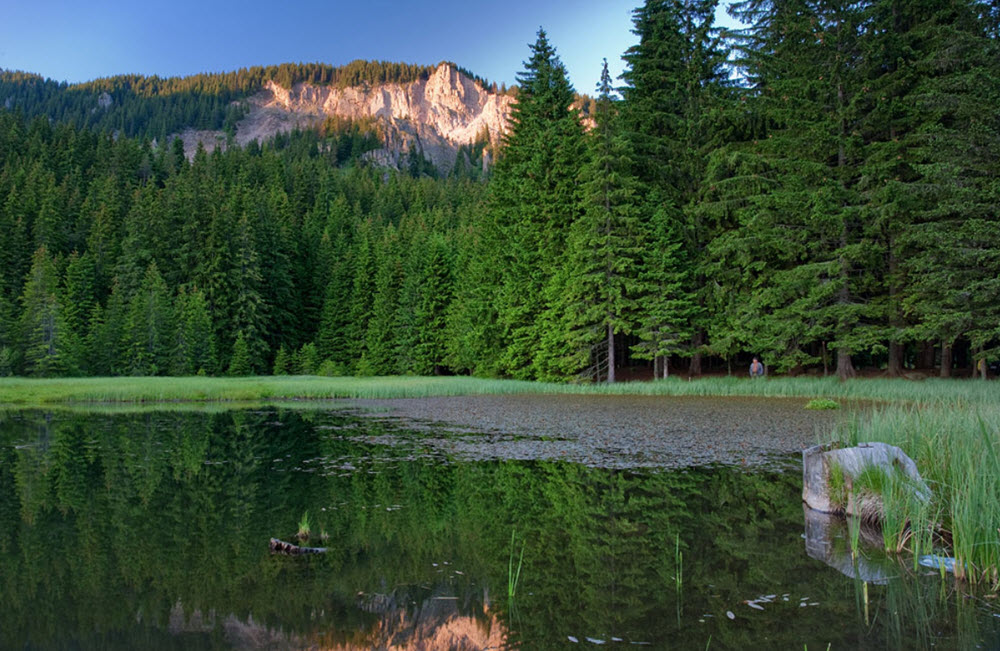Rhodope Mountains
Contents
The Rhodope Mountains contains a blend of open grasslands, oak forests, beech forests, river environments, rocky slopes and sharp cliffs. Many species that have gone extinct in other parts of Europe have survived here, and the area is now also the focus for a multi-faceted rewildering project. Among other things, European bisons born in captivity have been released here and formed a reproducing free-roaming herd.

The more wild parts of the region, including wildlife corridors, are surrounded by buffer areas where humans engage in small-scale farming. Notably, instead of creating major conflicts with local residents, the rewildering has created job opportunities in the tourism sector and helped boost interest in locally produced products and the traditional Rhodope mountain cultures.
Nearby natural environments
The Rhodope Mountains is a part of the Rila-Rhodopean Mountain Massif, which extends for more than 40,000 sq km. Located at a crossroad between Asia and Europe, and between the Mediterranean region and Continental Europe, the massif exhibits an especially interesting biodiversity.
The rewilding area in the Rhodope Mountains of Bulgaria is geographically connected to natural environments in the Rodopi and Orvilos Mountins of Greece. Towards the west, it is close to the Northern Pirin and Rila Mountains, which are home to the Pirin and Rila National Parks.
Bison herd in the Rhodope Mountains is multiplying
When a bison calf was born in the Rhodope Mountains rewilding area in May 2021, it was the fourth European bison to be born free in Europe south of the Danube for several centuries.
Prior to the birth, all females separated from the males and formed their own temporary female-only herd. Two weeks after the birth, they returned to the males, bringing the new addition to the herd with them. This caught a lot of interest from researchers, as they had assumed only the expecting mother would separate from the herd. Possibly, the other females joined her because she is an alpha female in the herd.
Since the European bison´s release in the rewilding area in the 2010s, they have adapted well and are doing seasonal migrations to find food. They live in the lower parts of the Studen Kladenets area in fall and winter, and then gradually seek out higher and less accessible spots in spring and summer.
The bison herd currently contains 12 animals, but the goal is to get that number up to at least 50 over time, as the European bison is considered a keystone species for the rewildering of the Rhodope Mountains. The Rhodope herd is growing step-by-step, through a combination of births and releases. One of the most recent releases took place in October 2020, when one donated female arrived from Sóstó Zoo (in collaboration with Miskolc Zoo) in Hungary and another one from the Bratislava Zoo in Slovakia.
In the late 1920s, only about 60 European bisons were alive in Europe, and they all lived in captivity after the last wild individual was shot to death in the Caucasus in 1927.

Vultures
Vultures in the region are being supported by the European Commission´s LIFE project ”Conservation of black and griffon vultures in the cross-border Rhodope mountains”. One of the main aims right now is to make the vultures less dependant on carcases from domestic animals, by boosting the presence of wild large herbivores in the rewildering areas. Plenty of red deer and fallow deer has been released, and an anti-poison dog unit is patrolling the mountains.
This is one example of how the rewildering of this region includes the restoration and promotion of natural food webs, rather than simply being about individual species.
The Rhodope Mountains in Bulgaria are a vital breeding area for griffon vultures and Egyptian vultures, and the Greek side of the mountain range is home to the last remaining breeding colony of black vultures in south-east Europe.
Between 2016 and 2021, conservation efforts helped the number of griffon vulture pairs in the Rhodope go from 91 to 117. Now, the plan is to reintroduce black vultures to the Bulgarian part of the mountains.
Examples of vulture conservation efforts carried out as part of the LIFE project:
– The release of 300+ juvenile griffon vultures over the course of five years
– The release of roughly 400 fallow deer and 50 red deer
– The establishment of an anti-poison dog patrol
– Insulating roughly 200 electricity pylons and installing 150+ diverters on power lines
– Building 15 nests for vultures
– Organising creative and educational workshops locally to promote vultures
